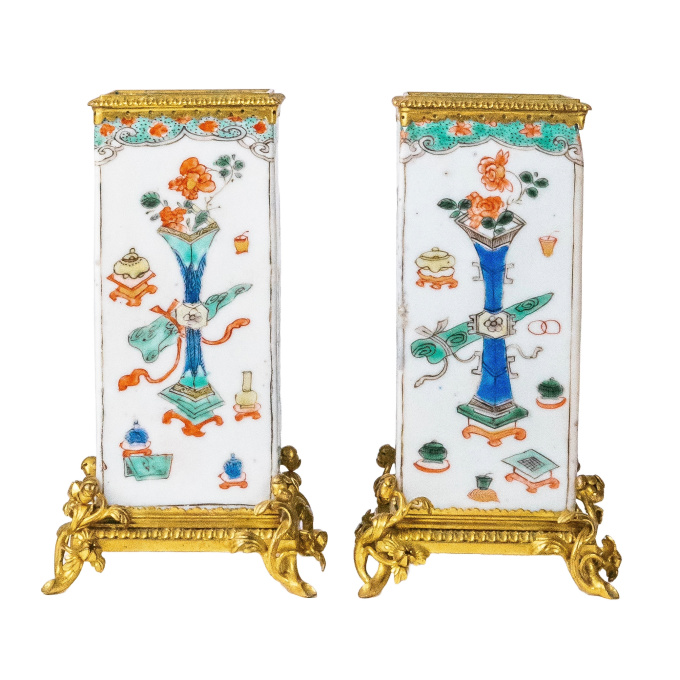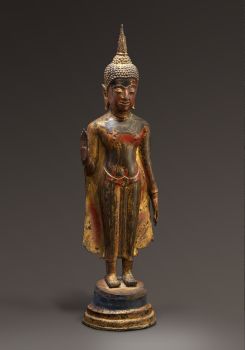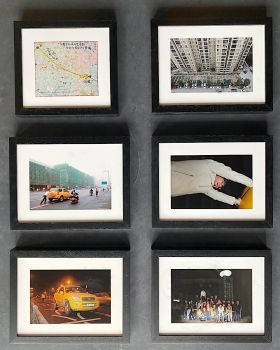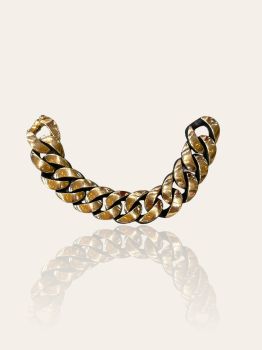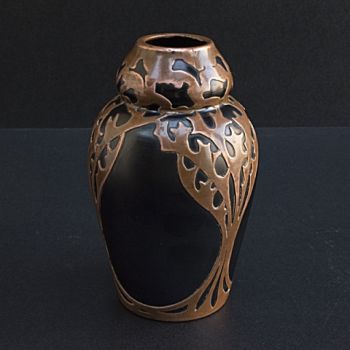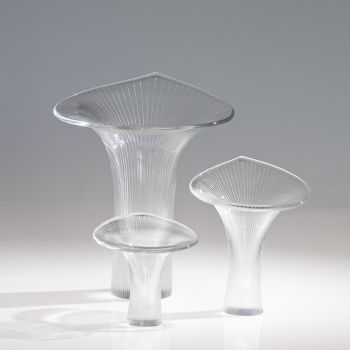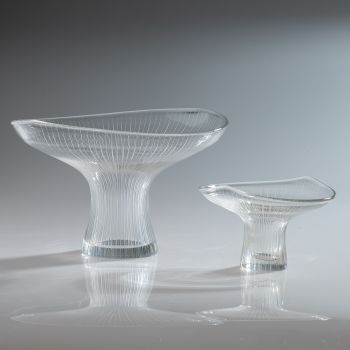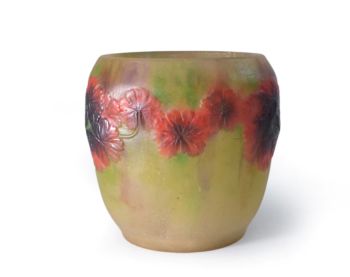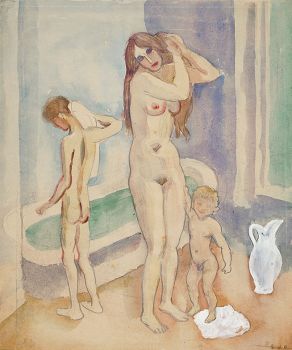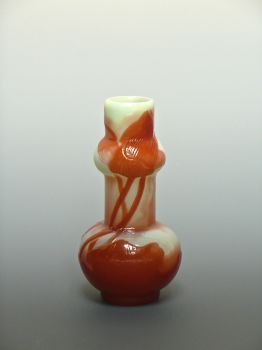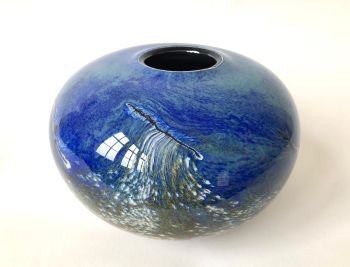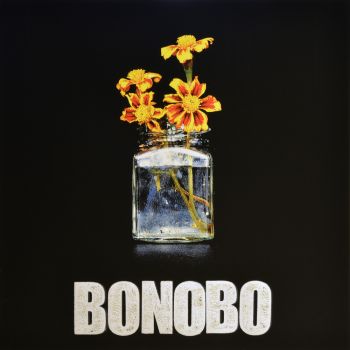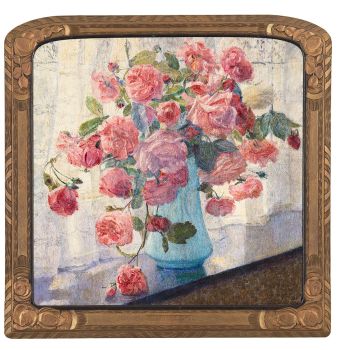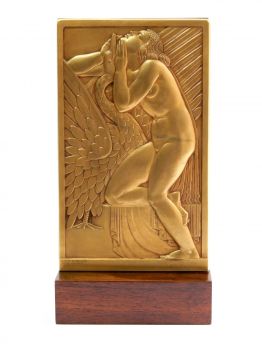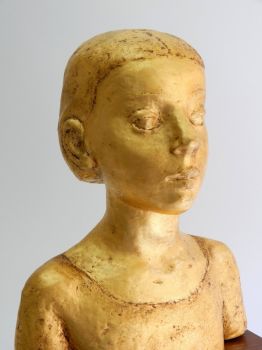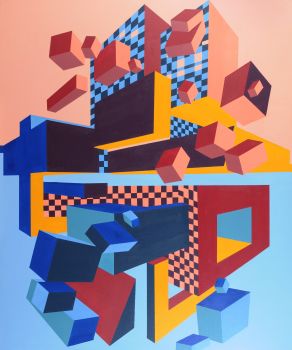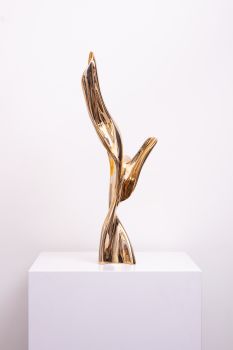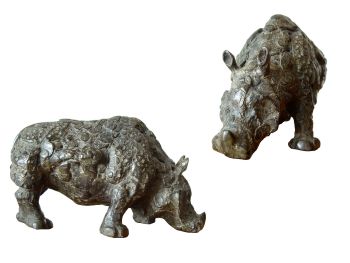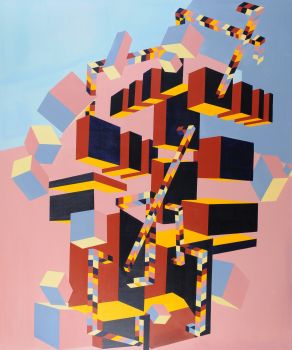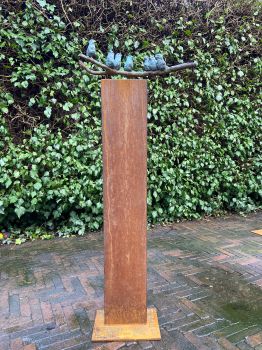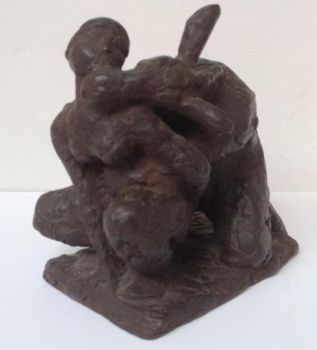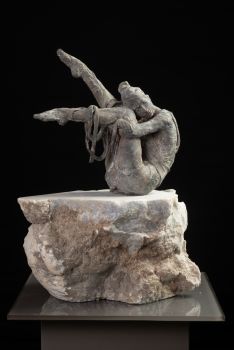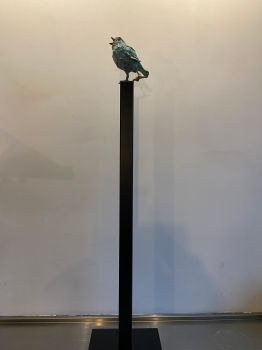A pair of famille verte vases, 18th century Kangxi 1662 - 1722
Unknown artist
Gilt bronzePorcelainChinese porcelainMetal
17 cm
ConditionVery good
Currently unavailable via Gallerease
- About the artworkA pair of Kangxi period (1662-1722) famille verte vases with the ‘Hundred Treasures’ decor and gilt-bronze mounts, around 1700, Jingdezhen, China.
Famille Verte
Dimensions: 16.8 cm. height.
This exceptional pair of vases has a fine decoration in famille verte style. The use of this style and colours emerged from 1670, during the Kangxi period (1662-1722). Famille verte can be characterized by the use of a combination of the colours green (predominantly), red, blue and yellow. The cobalt blue could be underglaze but it also appears overglaze as the other colours.
On two sides of both vases the ‘Hundred Treasures’ (or the ‘Hundred Antiques’, baigu 百古) are shown. This is a term used for a collection of Chinese symbols or symbolical items that often are depicted in Chinese art. It comprises precious objects, scholar objects and symbols, often referring to the four Chinese ancient arts. The Hundred Treasures are not specifically defined but they comprise specific sets called the ‘Eight Treasures’ (babao 八宝) and the ‘Four Treasures’.
On one side, we can see a resplendent vase with peonies in it, surrounded by treasures. On the opposite side, a beautifully detailed vase as well is shown in the middle, with peacock feathers and blood coral in it. The peacock feathers represent an official rank. The coral stands for longevity. This is very expectational and rich decoration. Also on this side the vase is surrounded by the Hundred Treasures including precious porcelain objects. The other two sides show a natural landscape with rocks overgrown by plants and flowers. Around the flowers, butterflies are flying. The vases are finished with fine gilt-bronze mounts to the top and bottom. The bottom mounts each have four elegant feet surrounded by moulded roses. The insides have bronze compartments as well. These compartments can be lashed out and could be used to add water to the vase without damaging the porcelain paste. The bronze mounts are crafted in Europe (France), in the 19th century.
Condition: good, some small fritting to the side. - About the artist
It might happen that an artist or maker is unknown.
Some works are not to be determined by whom it is made or it is made by (a group of) craftsmen. Examples are statues from the Ancient Time, furniture, mirroirs, or signatures that are not clear or readible but as well some works are not signed at all.
As well you can find the following description:
•“Attributed to ….” In their opinion probably a work by the artist, at least in part
•“Studio of ….” or “Workshop of” In their opinion a work executed in the studio or workshop of the artist, possibly under his supervision
•“Circle of ….” In their opinion a work of the period of the artist showing his influence, closely associated with the artist but not necessarily his pupil
•“Style of ….” or “Follower of ….” In their opinion a work executed in the artist’s style but not necessarily by a pupil; may be contemporary or nearly contemporary
•“Manner of ….” In their opinion a work in the style of the artist but of a later date
•“After ….” In their opinion a copy (of any date) of a work of the artist
•“Signed…”, “Dated….” or “Inscribed” In their opinion the work has been signed/dated/inscribed by the artist. The addition of a question mark indicates an element of doubt
•"With signature ….”, “With date ….”, “With inscription….” or “Bears signature/date/inscription” in their opinion the signature/ date/ inscription has been added by someone other than the artist
Artwork details
Related artworks
- 1 - 4 / 12
- 1 - 4 / 12
- 1 - 4 / 24
Johann Loetz (Lötz) Witwe Klostermühle
Johann Loetz Witwe - Phänomen Genre 7773 – Orange1900 - 1910
Price on requestAntiques Emporium
Unknown artist
A rare filigrana a retortoli goblet1550 - 1600
Price on requestPeter Korf de Gidts - Antiquairs
1 - 4 / 24Unknown artist
Series of 6 Chinese cups and saucers (Yongzheng period)1722 - 1735
Price on requestKuipers Kunst & Antiek
1 - 4 / 24

